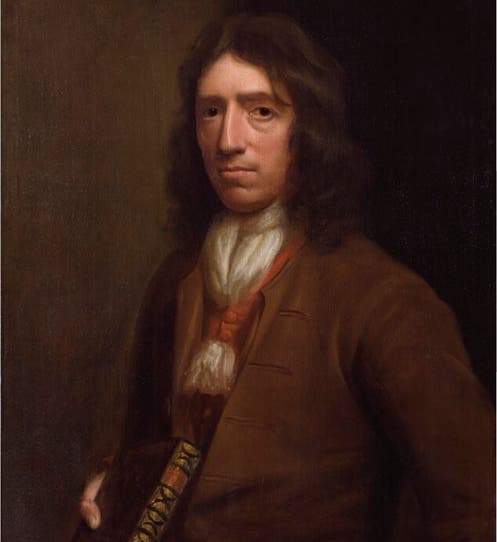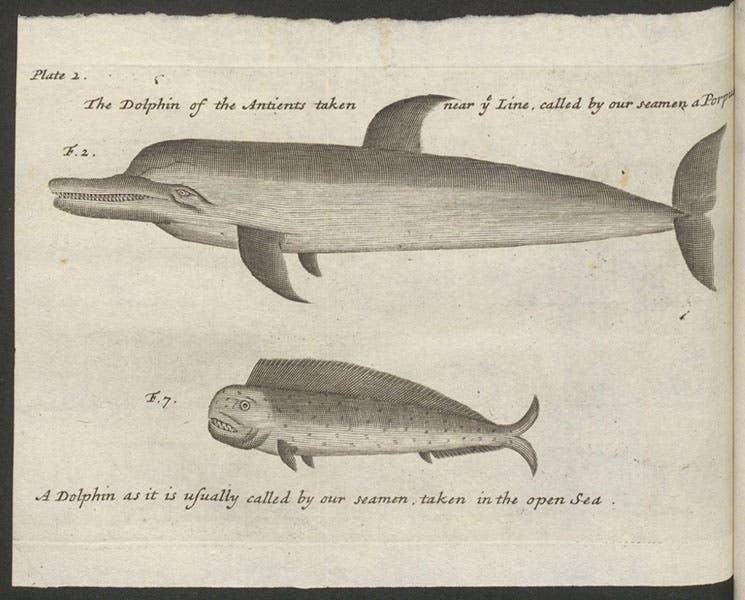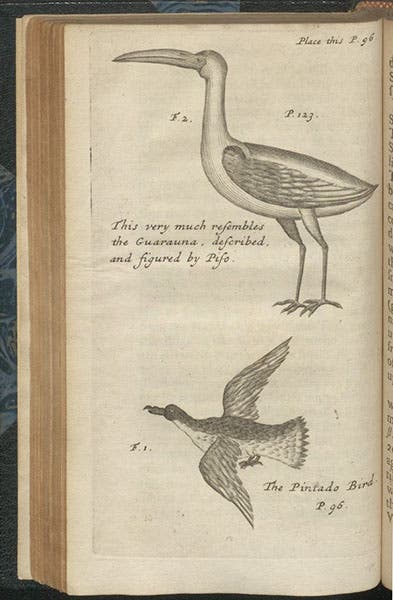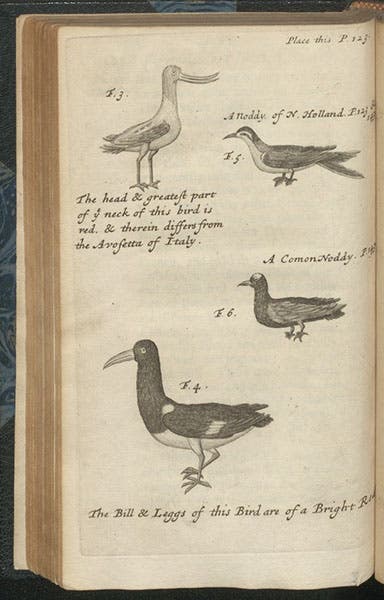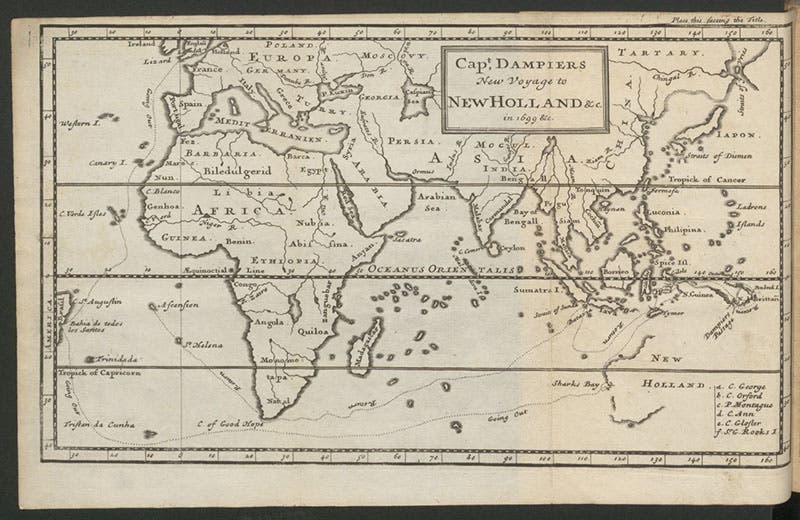Scientist of the Day - William Dampier
William Dampier, an English adventurer, navigator, naturalist, and on occasion, privateer, was born in 1652 and died in 1715, but he has no recorded birth or death date. Dampier made no less than 3 circumnavigations of the Earth, which was about equal to the total number of such around-the-world trips before him, by the likes of Ferdinand Magellan/Juan Elcano, Francis Drake, and Thomas Cavendish. His first took 12 years – he essentially pirated his way around the world – but unlike most buccaneers, he took a great interest in the people, flora, and fauna of the lands he visited, and he kept a journal. When he finally returned to England in 1691, with little else besides his diary, safely sealed away in a tube of bamboo, he decided to write an account of his adventures. A New Voyage around the World was published in 1697, and it was a sensation, turning Dampier from a no-name privateer into a nautical legend. His book was dedicated to the Royal Society, and that distinguished group took a great interest in Dampier, making him a fellow on the strength of his observations about natural history. He had his portrait painted by a first-class artist (first image). Although he had only commanded one ship in his years of travels, a Spanish vessel that they captured, the British Admiralty decided, when looking for a man to lead a voyage to the western coast of New Holland, as Australia was called at the time, to choose Dampier as commander. It didn’t hurt that Dampier had already been to New Holland during the course of his privateering.
HMS Roebuck set out in 1699 with Dampier at the helm. It was intended as a circumnavigation, but it was the wrong season to navigate the horn of South America (which they must have known when they set out), so the ship, after sailing down the coast of South America, went east around the Cape of Good Hope instead, and, in 1701, it would return by the same route. Dampier did indeed explore and map much of the western coast of Australia, and New Guinea as well. Dampier continued to pay close attention to the natural history of the places he visited. He was not helped by the Roebuck, which, although only 10 years old, was not especially seaworthy, and it slowly rotted away beneath the crew. The ship made it back as far as Ascension Island, in the south Atlantic Ocean off Africa, where it fell to pieces. Dampier made it to shore with his waterproof bamboo paper safe, and then Dampier and his men had to hitch a ride home to England on a passing ship. Once here, he wrote A Voyage to New Holland, published in 1703. Since a second volume of A New Voyage around the World had come out in 1699, this is often called Volume 3 of Dampier’s Voyages.
This is perhaps Dampier’s most "scientific book," in that he included images and detailed descriptions of a wide variety of plants and animals. We have all of Dampier’s voyages in their first editions in the Library, and because we cannot digitize all of them at once, we chose to scan A Voyage to New Holland for today’s post and illustrate it with some of the plates from that narrative.
We have already seen two plates from the 1703 book, the first an engraving of a traditional dolphin, which we now call a porpoise, and the fish that modern sailors call a dolphin (second image, above). The third image shows two birds studied by Dampier, the bottom one a Cape petrel that he says he spotted on a whale carcass. Dampier did not draw the images, because he couldn’t draw; instead, he enlisted the services of a crew member, who wasn’t much better than Dampier. So the acclaim Dampier gets as a natural historian comes from the accuracy and insightfulness of his descriptions, not from any drawings he did or commissioned. Our fifth image (just above) shows four birds, all of which can be identified by his descriptions, not by the depictions. They are: an Australian avocet, an oyster-catcher, a sooty tern, and a noddy,
The truth is, Dampier was the most observant English naturalist-voyager before James Cook and Joseph Banks in 1769. Dampier came out of nowhere, and it did not take too long for others to realize that the acquisition of knowledge about the rest of the globe was just as worthy a goal for a voyage as conquest. All of the scientific voyages of the 19th century, including Charles Darwin’s voyage on HMS Beagle, have their origins in the voyages and narratives of William Dampier.
There is a fine map that serves as a folding frontispiece to Dampier’s Voyage to New Holland and tracks the route of the Roebuck. We include here two details. The first (sixth image, above) shows the south Atlantic and the routes out and back of Dampier’s ship. Notice that the return leg ends just off Ascension Island, which is as far as the Roebuck made it. The second detail (seventh image, just above) shows Dampier’s route to Australia and New Guinea. The complete map is below (eighth image).
Dampier would publish a second volume of A Voyage to New Holland in 1709, making four volumes in all. Each would be often reprinted and translated into other languages. The second volume has a section on prevailing ocean winds that includes a thematic world map devoted just to winds. It is often stated that this map was derived from Edmond Halley’s wind map of 1686, but there is no evidence that Dampier ever saw Halley’s map, and anyway, Dampier’s map is different and much more detailed than Halley’s. Someday, after we have scanned volume 2, we will devote a second post to Dampier’s role in the inauguration of thematic mapping.
Dr. William B. Ashworth, Jr., Consultant for the History of Science, Linda Hall Library and Associate Professor emeritus, Department of History, University of Missouri-Kansas City. Comments or corrections are welcome; please direct to ashworthw@umkc.edu.

